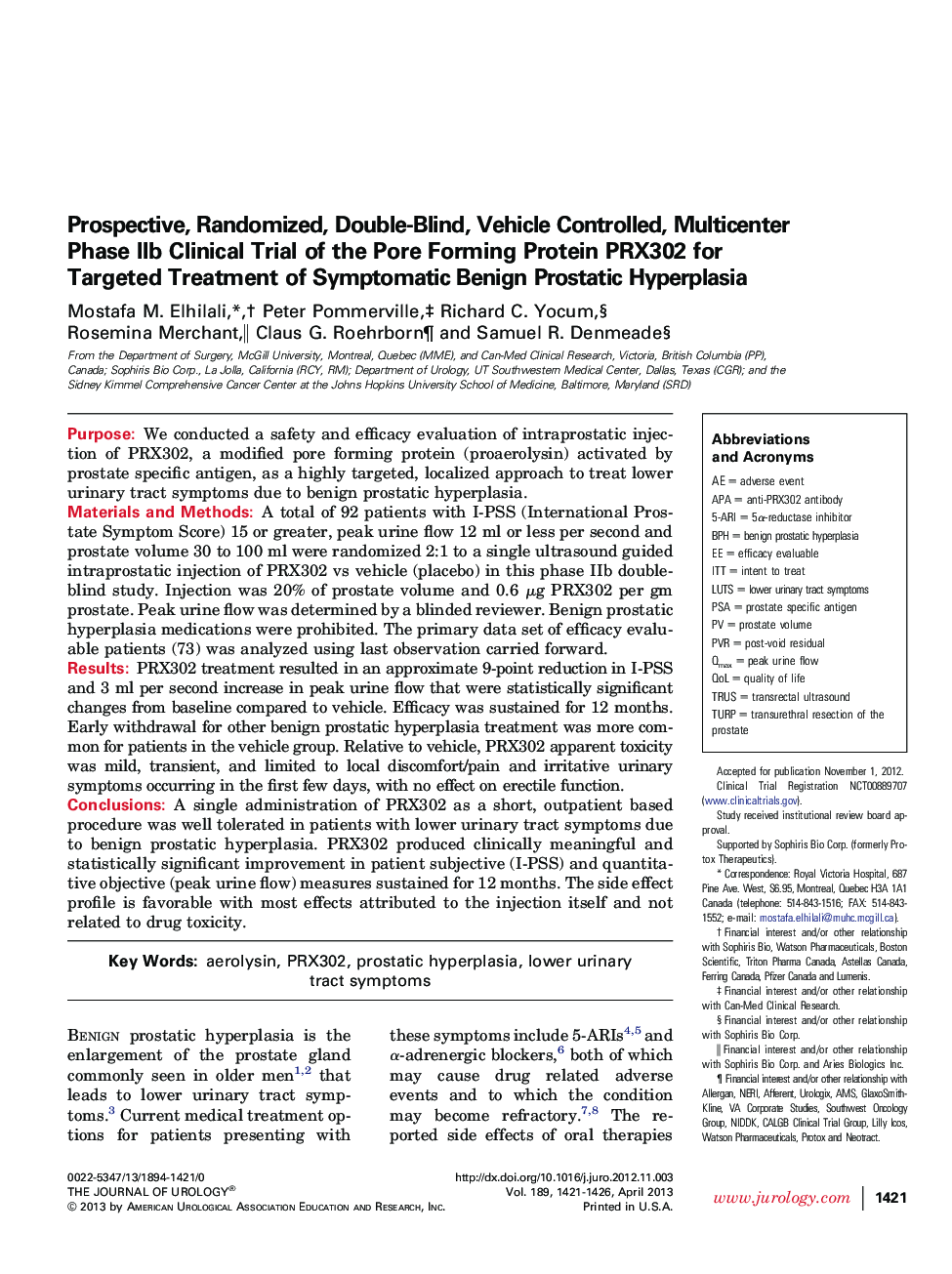| Article ID | Journal | Published Year | Pages | File Type |
|---|---|---|---|---|
| 3866876 | The Journal of Urology | 2013 | 6 Pages |
PurposeWe conducted a safety and efficacy evaluation of intraprostatic injection of PRX302, a modified pore forming protein (proaerolysin) activated by prostate specific antigen, as a highly targeted, localized approach to treat lower urinary tract symptoms due to benign prostatic hyperplasia.Materials and MethodsA total of 92 patients with I-PSS (International Prostate Symptom Score) 15 or greater, peak urine flow 12 ml or less per second and prostate volume 30 to 100 ml were randomized 2:1 to a single ultrasound guided intraprostatic injection of PRX302 vs vehicle (placebo) in this phase IIb double-blind study. Injection was 20% of prostate volume and 0.6 μg PRX302 per gm prostate. Peak urine flow was determined by a blinded reviewer. Benign prostatic hyperplasia medications were prohibited. The primary data set of efficacy evaluable patients (73) was analyzed using last observation carried forward.ResultsPRX302 treatment resulted in an approximate 9-point reduction in I-PSS and 3 ml per second increase in peak urine flow that were statistically significant changes from baseline compared to vehicle. Efficacy was sustained for 12 months. Early withdrawal for other benign prostatic hyperplasia treatment was more common for patients in the vehicle group. Relative to vehicle, PRX302 apparent toxicity was mild, transient, and limited to local discomfort/pain and irritative urinary symptoms occurring in the first few days, with no effect on erectile function.ConclusionsA single administration of PRX302 as a short, outpatient based procedure was well tolerated in patients with lower urinary tract symptoms due to benign prostatic hyperplasia. PRX302 produced clinically meaningful and statistically significant improvement in patient subjective (I-PSS) and quantitative objective (peak urine flow) measures sustained for 12 months. The side effect profile is favorable with most effects attributed to the injection itself and not related to drug toxicity.
